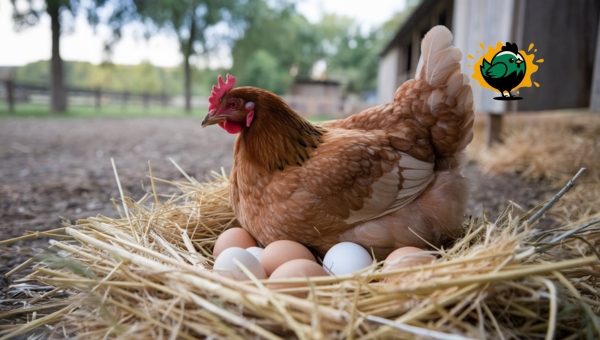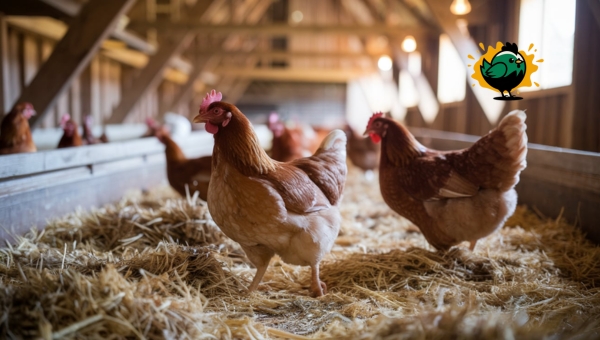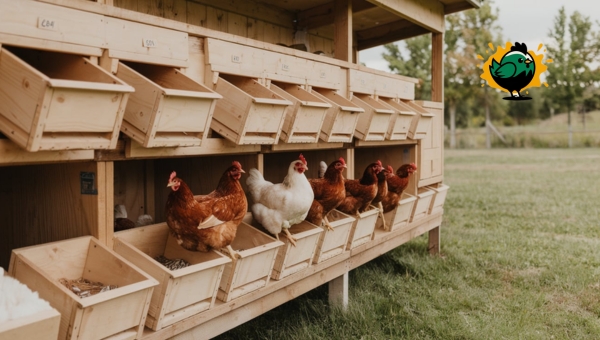Best Bedding for Hens | The Ultimate Guide

Choosing the right bedding for your hens can make all the difference in their overall health and happiness. It’s not just about comfort; it’s crucial for promoting a clean and productive environment. Good bedding reduces disease risks and stress, leading to plentiful, high-quality eggs.
In this guide, we’ll explore various bedding options and key factors to consider when selecting the perfect choice for your coop. Let’s dive into the world of hen bedding and discover how to create an ideal home for your flock.
Importance of Choosing the Right Bedding
Selecting the right bedding for hens is vital for their well-being. Proper bedding offers several benefits:

- Moisture Control: It absorbs moisture, reducing the risk of dampness that can lead to health issues.
- Odor Reduction: By minimizing odors, it ensures a pleasant environment for both hens and caretakers.
- Insulation: Aids in temperature regulation, providing warmth in colder months.
- Natural Behaviors: Encourages activities like scratching and nesting, promoting mental stimulation.
- Disease Prevention: A clean environment lowers stress levels and decreases the likelihood of diseases, supporting overall hen health.
Common Bedding Options for Hens
When it comes to crafting a comfortable and hygienic space for hens, choosing the right bedding is key. Each type of bedding offers its own set of benefits and challenges, so understanding these can help in making an informed decision. Let’s explore some popular bedding options to see what suits your hens best.
Straw and Hay
Straw and hay are often the go-to choices for hen bedding but each has its own characteristics:
- Advantages:
- Straw is readily available and provides decent insulation, keeping hens warm.
- It’s a soft surface, making it comfortable for nesting.
- Disadvantages:
- Straw can hold moisture, leading to potential mold growth.
- Hay, while softer, can be eaten by hens, which may result in digestive issues.
Wood Shavings
Wood shavings are another popular choice for hen bedding due to their unique properties:
- Advantages:
- They are highly absorbent, which helps in controlling moisture and odors.
- Wood shavings offer a pleasant aroma, adding freshness to the coop.
- Disadvantages:
- May require frequent changes to prevent mold if not managed properly.
- Might not provide the same level of insulation as straw.
Sand
Sand as a bedding option can offer both benefits and drawbacks:
- Advantages:
- It drains well and helps in keeping odors at bay.
- Sand is relatively economical and easy to clean.
- Disadvantages:
- Can become compacted over time, affecting comfort.
- If ingested in large amounts, it may cause digestive problems.
Hemp Bedding
Hemp bedding is gaining popularity for its eco-friendly nature and other features:
- Advantages:
- It is highly absorbent, reducing odor and maintaining a clean environment.
- Hemp bedding is low in dust, which is beneficial for both hens and their keepers.
- Disadvantages:
- It can be more expensive compared to other traditional options.
- Availability might be limited in some regions.
Also Read: Diatomaceous Earth for Chickens | Natural Protection
Factors to Consider When Choosing Bedding
When selecting bedding for hens, it’s important to weigh several factors that will impact their health and comfort. These considerations ensure a safe and clean environment for your hens. Below are key elements to keep in mind when deciding on bedding materials.

Absorbency
Absorbency is a critical factor as it directly affects the coop’s odor control and cleanliness. Bedding with high absorbency will:
- Control moisture: Prevents wet spots and reduces ammonia buildup.
- Reduce odors: Keeps the coop smelling fresh by trapping moisture.
- Enhance hygiene: Limits bacteria growth, promoting a healthier environment.
Cleanliness
Maintaining cleanliness in the coop is crucial for preventing diseases among chickens. Clean bedding helps in:
- Disease prevention: Minimizes the risk of infections by reducing bacteria.
- Ease of maintenance: Facilitates regular cleaning and bedding changes.
- Better air quality: Ensures a healthier living space by reducing dust and allergens.
Cost
Cost is a significant consideration when selecting bedding materials, as it affects long-term maintenance. Evaluating cost involves:
- Initial investment: Balancing upfront costs with quality and durability.
- Long-term expenses: Considering the frequency of replacement and maintenance.
- Value for money: Ensuring that the chosen bedding provides both comfort and practicality without overspending.
Top Recommendations for Hen Bedding
When it comes to finding the best bedding for hens, it’s important to weigh the options carefully. The right choice can make a significant difference in the health and comfort of your flock. Let’s explore a few top recommendations that balance cost, odor control, and nesting comfort.
Most Cost-Effective
- Straw: Known for being budget-friendly, straw provides good insulation and a comfortable surface for hens. However, it does require regular changes to maintain cleanliness.
- Wood Shavings: These are another economical option, offering excellent absorbency and a pleasant aroma. Regular maintenance is important to prevent mold growth.
Best for Odor Control
- Hemp Bedding: Renowned for its high absorbency, hemp bedding is excellent at minimizing odors in coops. Its low dust levels also contribute to a healthier environment for your hens.
- Sand: While not as traditional, sand is effective in controlling odors due to its drainage properties. It requires consistent maintenance to remain effective.
Best for Nesting Comfort
- Straw: Offers a soft, natural surface perfect for nesting, ensuring hens have a comfortable place to lay eggs.
- Hemp Bedding: Provides a soft and cozy environment, making it ideal for nesting comfort. Its eco-friendly nature is an added benefit for conscious poultry keepers.
Choosing the right bedding involves considering both the needs of your hens and practical aspects like cost and maintenance. Each option has its unique benefits, so select the one that aligns best with your situation.
Also Read: Can Chickens Eat Green Beans? Discover the Surprising Truth
How to Maintain Bedding for Optimal Chicken Health?
Keeping hen bedding clean and effective is vital for promoting their health. Here are practical tips to ensure your chickens thrive:
- Regular Cleaning: Make it a habit to remove droppings daily. Use a rake or scoop to keep the bedding fresh and reduce the risk of disease.
- Deep-Litter Method: Consider this method where you allow the lower layers of bedding to compost naturally. This not only controls waste but also provides warmth during colder months.
- Proper Ventilation: Ensure the coop is well-ventilated. This helps in reducing moisture buildup, which can lead to mold and bacteria growth.
- Frequent Inspections: Regularly check the bedding for signs of mold, pests, or excessive moisture. Replace it immediately if you notice any of these issues.
- Quality Bedding Choices: Choose bedding materials that are absorbent and easy to manage. This ensures a cleaner environment for your hens.
By following these tips, you can maintain a healthy living space for your chickens, supporting their well-being and productivity.
FAQs
How often should hen bedding be changed?
Hen bedding should be changed regularly, ideally once a week or more often if it becomes soiled. This helps maintain a clean environment and reduces the risk of disease.
Can sand be used as bedding for hens?
Yes, sand can be used as bedding for hens. It is economical and drains well, but it requires consistent maintenance to prevent compaction and ensure cleanliness.
Why is bedding important for hens?
Bedding is important for hens as it absorbs moisture, controls odors, and provides a comfortable surface for nesting. It also helps maintain a healthy environment, reducing stress and disease risk.
Is hemp bedding a good option for hens?
Hemp bedding is a good option due to its eco-friendly properties and high absorbency. It may be more expensive but offers excellent odor control and low dust levels.
Conclusion
Selecting the best bedding for hens is essential for their well-being and productivity. A comfortable and clean bedding environment supports natural behaviors, reduces stress, and minimizes the risk of disease. Consider factors like absorbency, cleanliness, and cost when choosing the right bedding material.
Exploring options like straw, wood shavings, sand, and hemp can help find the ideal fit for your coop. By maintaining optimal bedding conditions, you ensure a healthy and happy flock, leading to better egg production and quality.
If you found this information helpful, be sure to explore more insightful articles on our site for comprehensive poultry care tips!
